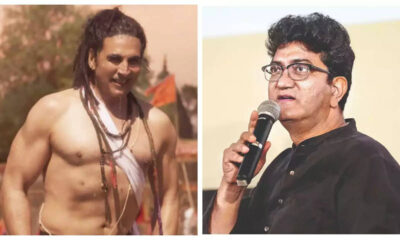Aakash Chopra, a former India opener, says it doesn’t really matter if Virat Kohli actually managed to fool the batters. It was actually his attempt to do so, and that is what qualifies for ‘fake fielding’.
Virat Kohli’s fake fielding was not appreciated by Bangladesh
Is it possible to keep Virat Kohli in the spotlight and avoid the discussions? The answer is simple. No! Kohli is often in the news because he scores a lot of runs. He is often in the news even though he isn’t. He is known for his incredible energy during practice sessions. He makes headlines again when he skips an optional session. He is making headlines for his amazing fielding, and he is also doing the same when pretending to do it. Virat Kohli’s latest news story is ‘Fake Fielding’. He is currently the top run-scorer in the T20 World Cup and was India’s top-scorer against Bangladesh, but all that seems to be a bit behind the scenes after Nurus Hasan, Bangladesh’s keeper, accused him of ‘fake fields’. So what’s the story? Arshdeep Singh, India pacer, took the ball from the deep and threw it towards Dinesh Karthik. Meanwhile, Nazmul Hasan Shaynto and Litton Das tried a couple. Between all this, Kohli gestured to collect the ball and throw it when it was not near him. The Bangladesh pair completed the second run without difficulty. Kohli’s actions did not affect the Bangladesh team.
However, Aakash Chopra, a former India opener, said that it didn’t matter if the batters were deceived. It is the attempt to do it that qualifies as fake fielding. What does the ‘fake-fielding’ rule mean? “…It is against cricket’s law 41.5 that refers to unfair play. It is unfair for any fielder to wilfully try, by word and action, to distract, induce or obstruct any batter after the striker has received their ball. In simple terms, if umpires believe the fielder attempted to deceive batters (by faking a throw or dive) then they can penalize the fielding team with five runs. The law’s basic principle is that if an umpire believes that you have attempted to deceive batters (by pretending to throw, dive or take any other action when the ball doesn’t reach you), then they can slap the fielding team with five penalty runs. Five penalty runs will be issued. If the five penalty runs had been given, the two Bangladeshi pairs that ran the fake fielding would still have been counted. The ball would have been dead, and Bangladesh would have the right to decide who takes the strike in the next ball. The consequences of fake fielding are severe. “Now, what happened in this instance? The on-field umpire did not see. It went completely unnoticed. It can’t be charged if no one has seen it. The law requires that umpires must see it and decide whether to charge it. If it is within the jurisdiction of the umpires, they may also be able to intervene. “Woh fake tha, 100%tha, wo throw marne-ka prayas, kia wo umpire dekhte tooh 5 run ki padti humko aur5 run se hum match jeete. He tried to throw the ball and it was 100% fake fielding. We would have been penalized five runs if the umpires saw it. Instead, we won by five runs. We managed to escape, but the umpires will need to be more cautious next time someone does it. Yes, they are Bangladesh, right? They are, but nobody noticed it so we can’t do any now.


 World News2 years ago
World News2 years ago
 World News2 years ago
World News2 years ago
 World News2 years ago
World News2 years ago
 World News2 years ago
World News2 years ago
 World News2 years ago
World News2 years ago



























